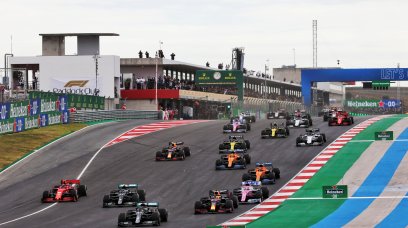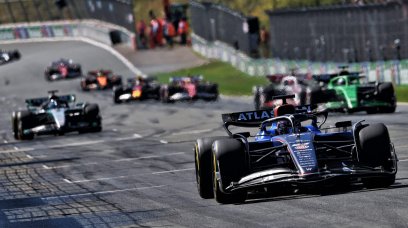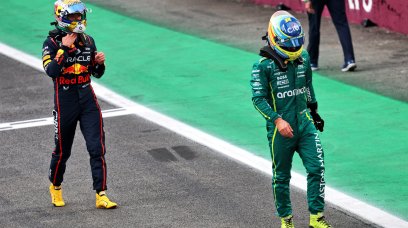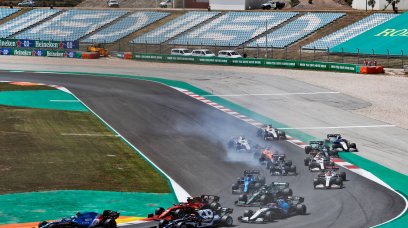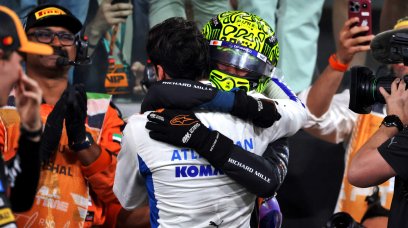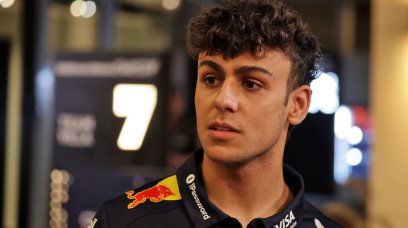Alfa Romeo Team Principal Fred Vasseur says Zhou Guanyu's first thought when he returned to the pits after his dramatic British Grand Prix crash was whether the team would have enough spare parts for the following race in Austria. Having been tagged by George Russell just after the start at Silverstone, Zhou's car flipped upside down and skidded at high speed off the track, with the force of the impact seeing the Alfa Romeo vault the outer barrier and come to rest wedged sideways against the inner catch fencing. Though there was much concern for Zhou's condition, the Chinese driver was released after precautionary checks at the circuit's Medical Centre, and later posted on social media to confirm he was unhurt. So unscathed was Zhou after the crash that Vasseur said the F1 rookie's immediate concern was for the stock of parts in the Alfa garage, rather than his own wellbeing. "[Zhou] came back to the garage one hour after the crash when he was released from the Medical Centre and he was [suffering] absolutely nothing," Vasseur told media, including RacingNews365.com . "[His] first question was about the stock of parts for [the Austrian Grand Prix]. "It's incredible to have such a huge crash and to come back into the garage, to have [no problems], to be focused on the next [race].
Vasseur praises Halo's effect
Vasseur also paid tribute to the role the Halo played in saving Zhou from serious injury, noting that he became a convert to the merits of the protective device. Just hours before Zhou's crash, the Halo had played a big role in preventing an injury between drivers Dennis Hauger and Roy Nissany in the F2 support race. "I was not the biggest fan of the Halo at the beginning, but I was wrong," said Vasseur. "Between Zhou and the F2 crash, I think [the lack of injuries] was thanks to the FIA."
Alfa and FIA to investigate roll hoop failure
While the Halo maintained its structural integrity in protecting Zhou from harm, the same cannot be said of the roll hoop on the Alfa Romeo C42, which appeared to disintegrate upon impact with the tarmac. Vasseur said that investigations into the crash were still ongoing, but added that the chassis had been subjected to considerably more force than in F1's mandatory crash tests. "It's still under investigation, and we'll share all the information about the crash with the FIA," Vasseur explained. "The first [issue] is that the crash was something like two times more than the load of the crash test. "I don't know if you had the look on the tarmac, but we dug a groove into the tarmac something like four or five centimetres deep. "It doesn't matter the level of the crash test, you can always find something a bit bigger, and we'll have to take action on our side and with the FIA to see how we can improve safety. "But at the end of the day, I want to stay positive and to say, after such a big crash, nothing happened. You can't imagine what could be the outcome if we had fuel on the car. "Thanks to the safety [measures], we had no fuel leak on the car, because this would have been by far the worst case scenario."
Most read
